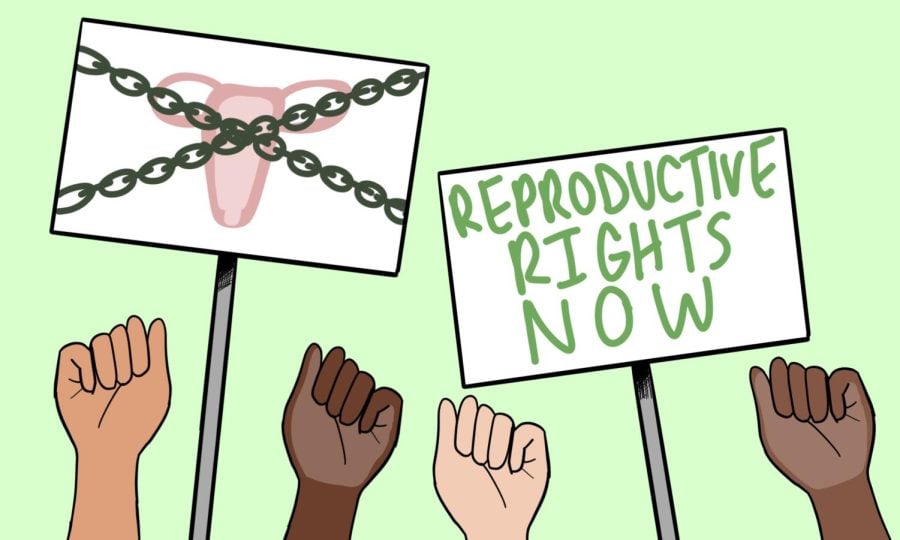Gender and Sexuality Studies Program talks past, present and future of abortion rights
Daily file illustration by Olivia Abeyta
Professors discussed the history of Roe v. Wade on Friday.
October 16, 2022
The Gender and Sexuality Studies Program and Center for Legal Studies discussed the historical context behind the reversal of Roe v. Wade at a Friday conversation.
Led by legal studies Prof. Joanna Grisinger and history Prof. Kate Masur, the panel gave attendees the opportunity to ask questions about abortion rights in the U.S.
“(We) benefit from a democratized space for asking questions,” gender and sexuality studies and English Prof. Nick Davis said.
People have always had ways to limit the number of children they have and to stop pregnancies from developing, Masur said. She said before the mid-19th century, discussions about reproduction were typically left to women, their families and their communities, including midwives.
During this time, abortion was not something that could end up in court, except in cases of death after failed abortions, where Masur said the abortion provider could be held responsible. The turning point for abortion occured between the 1840s and 1870s, when newspapers began printing sensationalist stories about people who died after receiving an abortion.
“A lot of times, this person who died as a result of an abortion would be a white, married woman, so a very innocent-seeming person,” Masur said. “This gets sensationalistic coverage where a person is represented as someone who was seduced by either a man or seduced by evil abortion providers who persuaded her to do something that she really didn’t want to do.”
After this, state-level movements to restrict abortion and create stricter criminal penalties for abortion providers began to grow, Masur said.
She added that this trend was complemented by the increasing professionalization of the medical industry, when doctors joined the movement to limit midwivery and restrict abortion.
“Physicians lobbying was what drove the passage of very strict abortion laws in the states in the 1860s and ’70s,” Masur said.
Around this time, the U.S. ratified the 14th Amendment, which created the due process clause. Grisinger said the clause, which says states cannot make laws that would deprive any person of “life, liberty, or property,” later played a large role in the Roe v. Wade decision.
Grisinger said the Supreme Court focuses on the word “liberty” in the due process clause. Under Griswold v. Connecticut, which limited the government’s ability to restrict contraception access, the Supreme Court established the constitutional right to privacy — the basis of the Roe v. Wade decision.
“It’s worth thinking about why liberty and not equality,” Grisinger said. “Why is so much of the talking about the right to access to abortion in the language of the due process clause and not the protection clause? Why (is it) not coming from a vigorous defense of women?”
In the 1960s, the women’s rights movement began to argue that abortion and contraception are an integral part of equal access to education and career.
Grisinger said people have begun to question whether Roe v. Wade was the right case to hear for abortion rights, because it focused on privacy rather than equality for women.
“If the states are free to regulate abortion, why wouldn’t the states be free to regulate contraception?” Grisinger said. “It would be a pretty easy doctrinal shift to be like, if we got rid of this, what would keep us from getting rid of (other rights)?”
Email: [email protected]
Twitter: @nicolejmarkus
Related Stories:
— Northwestern faculty talk monkeypox risk factors at LGBTQ+-focused discussion
— NU students discuss past and future work in abortion rights post-Roe
— Demonstrators organize to protest anti-abortion lawyer following Roe v. Wade reversal


